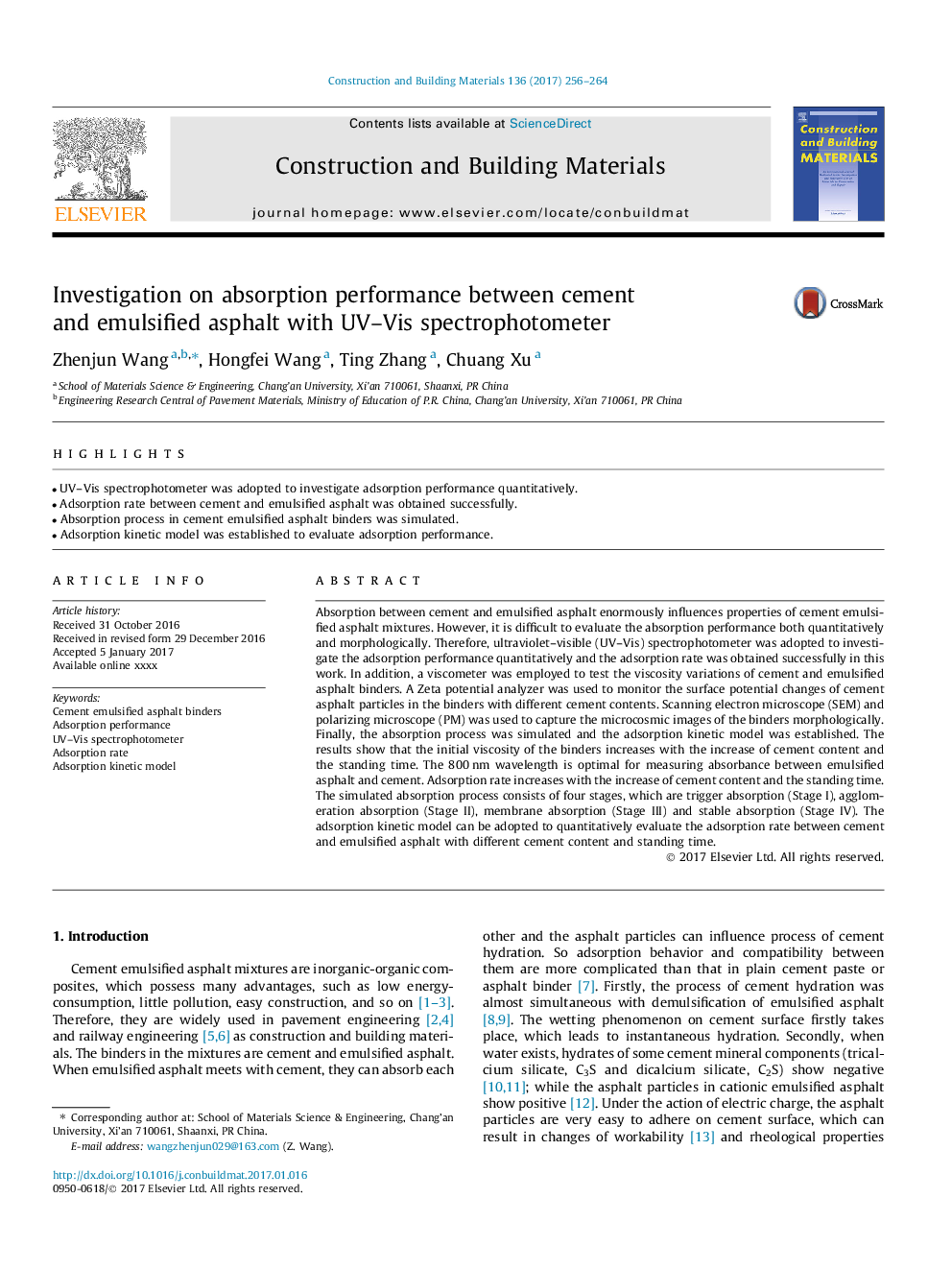| Article ID | Journal | Published Year | Pages | File Type |
|---|---|---|---|---|
| 4918540 | Construction and Building Materials | 2017 | 9 Pages |
Abstract
Absorption between cement and emulsified asphalt enormously influences properties of cement emulsified asphalt mixtures. However, it is difficult to evaluate the absorption performance both quantitatively and morphologically. Therefore, ultraviolet-visible (UV-Vis) spectrophotometer was adopted to investigate the adsorption performance quantitatively and the adsorption rate was obtained successfully in this work. In addition, a viscometer was employed to test the viscosity variations of cement and emulsified asphalt binders. A Zeta potential analyzer was used to monitor the surface potential changes of cement asphalt particles in the binders with different cement contents. Scanning electron microscope (SEM) and polarizing microscope (PM) was used to capture the microcosmic images of the binders morphologically. Finally, the absorption process was simulated and the adsorption kinetic model was established. The results show that the initial viscosity of the binders increases with the increase of cement content and the standing time. The 800Â nm wavelength is optimal for measuring absorbance between emulsified asphalt and cement. Adsorption rate increases with the increase of cement content and the standing time. The simulated absorption process consists of four stages, which are trigger absorption (Stage I), agglomeration absorption (Stage II), membrane absorption (Stage III) and stable absorption (Stage IV). The adsorption kinetic model can be adopted to quantitatively evaluate the adsorption rate between cement and emulsified asphalt with different cement content and standing time.
Related Topics
Physical Sciences and Engineering
Engineering
Civil and Structural Engineering
Authors
Zhenjun Wang, Hongfei Wang, Ting Zhang, Chuang Xu,
